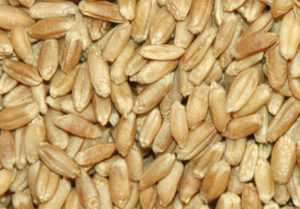Writer: Adam Russell, 903-834-6191, adam.russell@ag.tamu.edu
Contact: Calvin Trostle, 806-746-6101, ctrostle@ag.tamu.edu
Texas wheat acres are being prepared and planted, and despite fewer acres, projections are for a high-yield 2020.
U.S. Department of Agriculture planting projections suggest producers will plant 1% less wheat than last year nationally. Last year, around 4.5 million acres of wheat were planted in Texas.
But the USDA expects acres to produce significantly higher yields compared to 2019. Hard red winter wheat, which is the class most Texas acres are planted with, is expected to produce almost 27% more wheat than last year in the U.S.
Wheat performance
Calvin Trostle, Texas A&M AgriLife Extension Service agronomist, Lubbock, said wheat research and breeding programs have produced varieties that perform significantly better when it comes to yields and drought, disease and pest tolerance.
“Wheat varieties are better than ever,” he said. “Wheat breeders have been very successful. Nothing planted 20 years ago would be picked to plant today.”
Variety performance is one thing Trostle attributes to the high U.S. stocks of grain wheat. Early stocks were at 462 million bushels, which is double historic averages.

Whole wheat kernels. U.S. wheat grain stocks are at 462 million bushels, double historic averages. (Texas A&M AgriLife photo by Kay Ledbetter)
“More wheat on hand tells us why wheat prices are suppressed,” he said. “U.S. and international supplies are up. We’re growing more grain on fewer acres, and other countries are producing more wheat than in the past as they utilize better techniques and technology.”
Low grain prices resulted in a growing number of producers choosing to graze out wheat fields this year, Trostle said.
“Usually producers will stop grazing around March 15 in the Texas High Plains to go to grain,” he said. “That date gets earlier and earlier the further south and east you go. But with grain prices what they have been, we’ve seen more producers decide the value of having calves grazing on wheat four to six weeks longer is higher.”
Just add rain
Weather will continue to be a major question mark for wheat producers when it comes to planting, acres and ultimately yields, Trostle said.
Producers prefer to plant in soil with some moisture, he said. But most of the wheat-producing regions of Texas are dealing with short levels of moisture.
September is typically the second wettest month for Texas’ wheat belt – High Plains and Rolling Plains – but the season has been scattered and delivered less than usual, Trostle said.
Trostle said producers in the High Plains typically plant wheat Sept. 1-Sept. 15 in the hopes of providing winter forage for cattle as early as possible. Irrigated wheat is on schedule, and some dryland producers have put seed in dry soil and are waiting for rain.
“They can wait for rain. The seed will be fine if it sits for a while,” he said. “It may just be a little later for grazing than producers prefer.”

Leave a Reply